Christine M. Jewell
TEACHER'S SNAPSHOT
Topics:
Invention & Technology, Transportation
Themes:
The Impact of Science, Technology, and Innovation on the Development of Connecticut Towns and the State, Using Evidence to Learn About the Past
Town:
Bridgeport, Chester, Fairfield, New Haven, Noank, Noroton Heights, Putnam
Grade:
Grade 3
Historical Background
Students will explore how technology and innovation affected life in Connecticut in the late 19th and early 20th century. Farming communities transformed with the introduction of the trolley system and then the railroads. Communities like Bridgeport went from building horse-drawn wagons to creating the “horseless carriage.” Trolleys connected communities in the late 1800s, similar to today’s bus system.
D1: Potential Compelling Question
D1: POTENTIAL SUPPORTING QUESTIONS
- How would your life have been different if you lived 100+ years ago?
- How has transportation changed over time?
- How did new modes of transportation affect the daily lives of the people in Connecticut?
- How have technology and innovation affected towns and cities in Connecticut?
D2: TOOL KIT
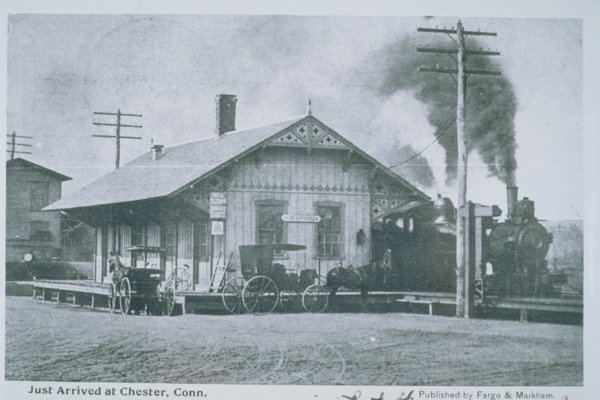
Just Arrived at Chester, 1890-1920. Archives & Special Collections, University of Connecticut Library.
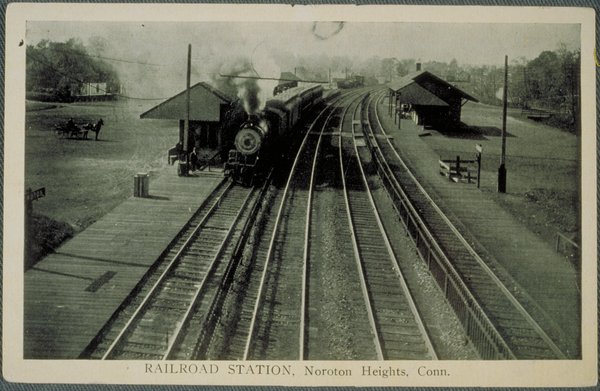
Railroad Station, Noroton Heights, 1890-1920. Archives & Special Collections, University of Connecticut Library.
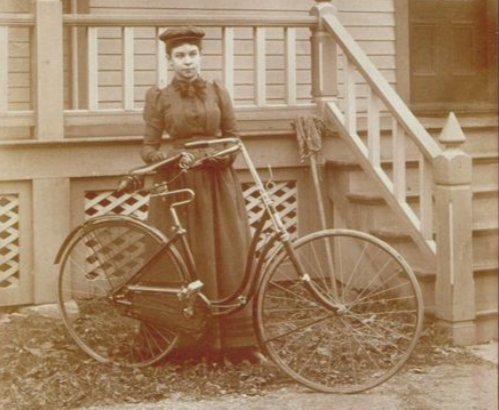
Fannie B. Wildman with the latest bicycle, Danbury. Connecticut Museum of Culture and History.
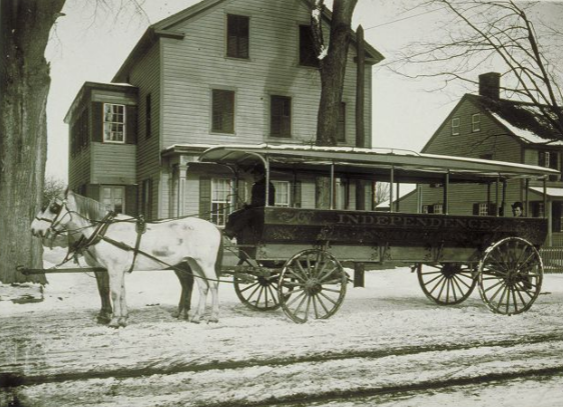
Horse-drawn omnibus in the snow, New Haven. Connecticut Museum of Culture and History.
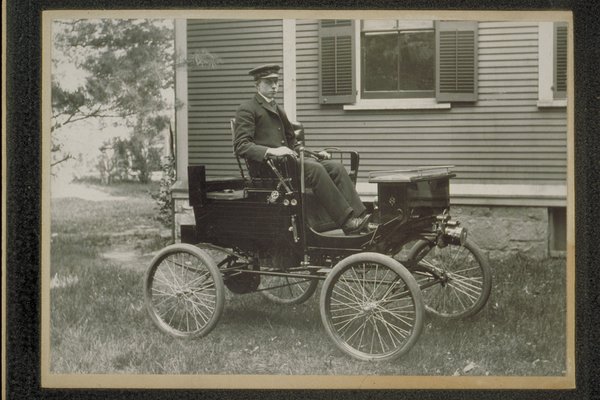
Joseph Brown Session – his first car, Bristol, 1902. Connecticut Museum of Culture and History.
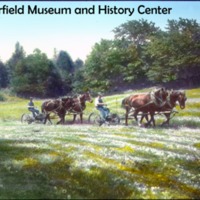
Two Men Driving Horses. Photograph by Mabel Osgood Wright. Fairfield Museum and History Center.
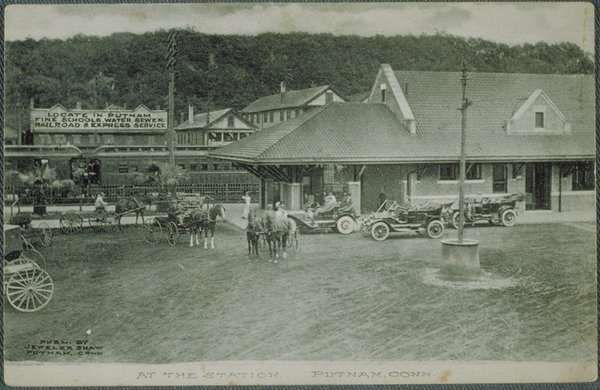
At the station, Putnam, 1910-1925. Archives & Special Collections, University of Connecticut Library.
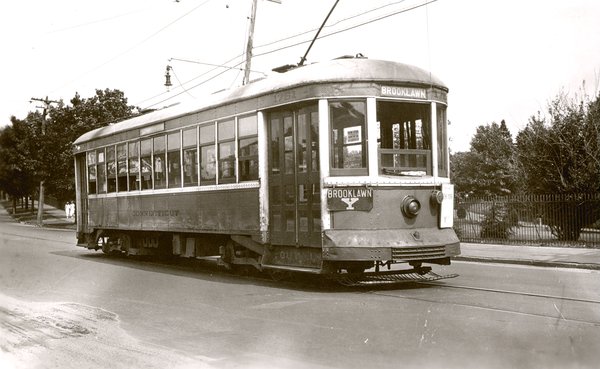
Brooklawn Trolley, Bridgeport, 1935. Fairfield Museum and History Center.

Library of Congress Primary Source Analysis Tool
D3: INQUIRY ACTIVITY
1) Open the inquiry by discussing:
What types of transportation do the students and their families use every day?
Which ones do they use only rarely or never?
What do they think life was like for people living in their town before some of these types of transportation were available?
How would it be different? How the same?
2) Provide each student with a printed or digital copy of the Library of Congress Primary Source Analysis worksheet. Use one of the images from the toolkit to model the analysis technique with the whole class. You may also wish to find a transportation-related image from your students’ own town/city on the Connecticut Digital Archive to use as the model.
Observe: Ask the students what is happening in the photograph. What do they notice? Are there any clues to when this photo was taken? What is the main subject of the photo?
Reflect: What kind of transportation does this image show? Does it look familiar? Do we still use this type of transportation today? If so, in what ways is it similar to or different from what we use today? Why do you think this image was made?
Question: What do the students wonder about this photo? What questions do they have? How or where could they find out more?
3) Once you have modelled the technique, have students work as a class, in small groups, or individually to analyze another image from the toolkit and share their finding with the rest of the class.
4) Wrap up the inquiry by discussing the compelling and supporting questions and listing any new questions that students would like to investigate further.
D4: COMMUNICATING CONCLUSIONS
- Students will research a form of transportation that was once—or still is—used in Connecticut, such as horse-drawn carriages, bicycles, trolleys, trains, and automobiles. When was this technology first developed or used? How did this transportation technology affect people in Connecticut? Were there any Connecticut innovators or inventors involved in the development of this mode of transportation? Students will create a poster or timeline of their chosen type of transportation and create a classroom exhibit by organizing their projects chronologically on a table, wall, or white board.
- Students will research how to use public transportation today. Students will select two different places in Connecticut and determine whether they can get between them using public transportation by using Google maps or regional bus/train timetables. What are some other ways to get around in Connecticut? Students will research transportation options today and how long it takes to travel using these types of transportation.
ADDITIONAL RESOURCES
Place to GO
Connecticut River Museum, Essex
Connecticut Trolley Museum, East Windsor
Essex Steam Train & Riverboat, Essex
Mystic Seaport, Mystic
Railroad Museum of New England, Thomaston
Shore Line Trolley Museum, East Haven
Things To DO
Explore other documents and stories related to this inquiry at Library of Congress: Transportation.
Websites to VISIT
Articles to READ
ConnecticutHistory.org:
“Albert Augustus Pope, Transportation Pioneer” by Gregg Mangan.
“Frank Duryea Drives the First Automobile in Connecticut”
“Ferry Boats a Way of Life in Early Connecticut” by Richard DeLuca.
“Charles Ritchel and the Dirigible” by Richard DeLuca.
“Branford Gets On the Trolley”
“Merritt Parkway Creates Scenic Gateway to New England” by Doe Boyle.
“Airborne Pioneers: Connecticut Takes Flight” by Richard DeLuca.
“Steam Railroads Transform Connecticut Travel and Commerce” by Richard DeLuca.
“The League of American Wheelmen and Hartford’s Albert Pope Champion the Good Roads Movement” by Richard DeLuca.



